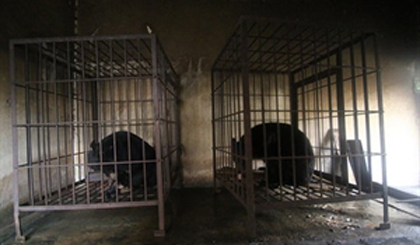Vietnam moves to end bear captivity
The Director of Education for the Nature of Vietnam (ENV), Vu Thi Quyen, has said that people should be proud of the achievements made over the past decade in addressing bear farming, protecting biodiversity and aiding the wild bear population.
 |
| Two captive moon bears used to be kept on Ba Mun Island in the northern Quang Ninh province (Photo: AnimalsAsia) |
Speaking at a press briefing to launch Vietnam Bear Day on May 7 in Hanoi, Quyen hailed the joint efforts of the government, celebrities, businesses and the public in the mission.
Ambassador to the bear protection programme, singer My Linh, said as many as 30 documentaries have been produced with the participation of more than 60 singers and entertainers to send a message calling for an end to bear captivity in Vietnam.
She also called on continued public involvement to free 1,250 captive bears to totally eliminate the issue.
Meanwhile, a wide range of activities have been simultaneously organised across 15 provinces and cities, with the participation of thousands of volunteers to raise public awareness of bear protection.
Vietnam is home to two endangered Tibetan and Malayan bear species. Bear farming has fast developed in the country since the early 90s, with the animals often kept in tiny cages and fed poor diets. Farmers extract bile from their gall bladders, a painful and stressful process, as some people believe it to have medicinal qualities.
In 2005, a government programme was launched to stop this cruelty, and a number of legal documents were introduced to strengthen the management of the captive bear population.
As many as 4,300 captive bears were tagged and registered with relevant authorities, as an effort to prevent an expansion of bear captivity and exploitation.
Many rescue centres and institutions have been established to receive captive bears, such as the Animals Asia facility in the northern town of Tam Dao.
According to a 2014 ENV survey, Vietnam has seen a 61 percent decrease in the use of bear bile since 2009.
(Source: VNA
 về đầu trang
về đầu trang







